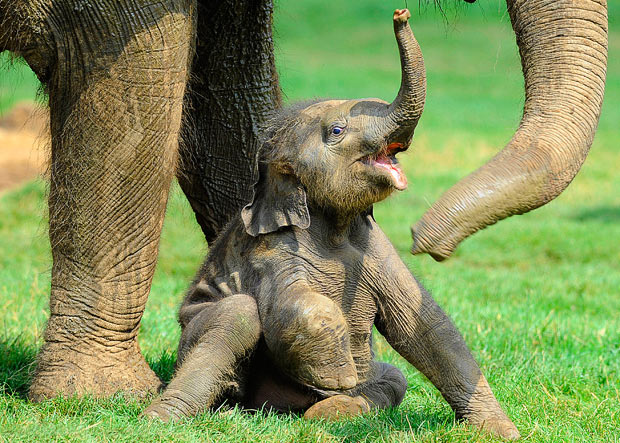Editor’s Note: Despite the publication date of this essay, this is not an April Fool’s Day joke, and we encourage you to actually view the campaign linked below. In a porn culture, the consumption of women’s body parts is normalized and fetishized. Shocking as it may seem, products and projects like this one are the predictable result.
Here we go, as if the daily reminders of women’s bodies as objects through the media are not enough, consumer culture has concocted yet another way of degrading women. As of last week an IndieGogo campaign has been created to fund the first vaginal beer. The pitch is that they will use a Czech model’s lactic acid bacteria from her vagina and implement it into a beer. Their long-term plan is to expand the line to involve other women in the production of this beer.
Before getting too deeply into this topic, it is important to point out that not all women have vaginas and that men can also have vaginas, so the pairing of the words “woman” and “vagina is problematic. Although as a cisgender person myself, I cannot accurately critique this from a transgender perspective. Therefore, the light referencing of this issue is not meant to undermine, but rather it is the recognition on my part that it would be disingenuous of me to deeply dissect this project through such a lens.
To start off, the campaign video for project is riddled with sexist language and makes no effort to hide the high levels of objectification being used to appeal to a straight male audience. In the first ten seconds of the video the viewer is presented with the words, “Imagine a woman of you dreams, your object of desire.” The first words of this video flat out refer to women as an object of desire. The hook of this campaign’s video starts off strong with these words, which are accompanied by a sketch of the behind of a naked woman. The first couple seconds presents us with the reality that referring to women as an object in a patriarchal society can be done in such a casual manner without any pressure on the speaker to defend such a statement. Even more so, this statement is intended to drive profit.
This campaign is not unusual in that sexualized women’s bodies are used to sell everything, especially consumptive products. The term consumptive product here is used in the literal meaning of “things that can be ingested into the body”. It is not new information that these sexualized tactics are used to sell an array of animal products such as hamburgers and steaks in commercials and other forms of media. Although, this campaign takes it even farther by creating a product that literally allows men to drink particular female bodies. This is the actual bottling of vaginal secretions to be sold, so that men can ingest “the essence of femininity and women’s instincts”. Not to mention that there is an intentional use of beer to be the subject of this product, being that beer is a notoriously male-marketed alcoholic beverage.
The creators of this project also make sure that they sexualize women, while also shaming them. They explain that the drink does not taste or smell like a vagina. Through doing this it can be understood that women’s bodies are only profitable as long as they are represented in this particular fantasy framework of desire. The natural functions of a vagina are not desirable; in fact, they are something to be disgusted by. Therefore, any arguments that women are being honored in this product should pay attention to this distinction of the smell and taste by the creators while unpacking the true intentions of this product. A true honoring of women would recognize the diversity of women and a true honoring of vaginas would entail an honest representation of the functions of a vagina, beyond a representation deeply entrenched in sexualization and commodification.
Even more so, the language used to describe what a consumer will supposedly get from this beer provides an overbearing amount of gender norms. The video describes flavoring the beer with female essence, femininity, and instincts. The use of these terms reduces women to the idea that they inherently encapsulate these terms (so inherently that the origins can be traced, extracted, and sold). This ignores the fact that gender is a social construction; the biological female essence or instinct does not exist. Furthermore, as stated before, not everyone with a vagina is a woman and to have such a strong link in this product between these two words is harmful towards those who are transgender. Of the terms used to describe the ingredients of this beverage, the term femininity is particularly oppressive. This term is rooted in a burden on everyone who appears to be a woman to interact with the world in a particular way, regardless of whether they identify as women or their actual personalities. This way of characterizing women is not inherent or natural; it is a way in which society restricts women. One cannot scientifically bottle up femininity or women’s instincts in a bottle, but you sure can put your sexist social constructions into a bottle and start a crowdfunding campaign!
This project further frames the need for an intersection between animal rights and feminism. In this example it is clear that the female human-animal body has been reduced to an object to be ingested into the bodies of others for pleasure. This has been a constant in plight of non-human farm animals. In both cases there is a sense of entitlement of those in a position of power towards the bodies of these persons and what these bodies produce are subject to commodification. The reduction of a person to a product that is purchased and enjoyed so fleetingly is a reflection of the level of worth that person is assumed to have in society. Here specieism and feminism intertwine in the need to recognize that the bodies of persons are not to be objectified and commercialized, but to be respected as individuals with autonomy. The only way this can be achieved is through recognizing that the oppression of marginalized groups is not mutually exclusive, but that they are intertwined and reproduce each other.
 Alexus is an animal rights activist, who is in a constant state of trying to unlearn indoctrinated forms of injustice. She spends the majority of her days reading to get her degree in Environmental Policy, she is also a writer for the EPIB Trail (an environmental justice newsletter), and on the weekends she waitresses at a vegan café.
Alexus is an animal rights activist, who is in a constant state of trying to unlearn indoctrinated forms of injustice. She spends the majority of her days reading to get her degree in Environmental Policy, she is also a writer for the EPIB Trail (an environmental justice newsletter), and on the weekends she waitresses at a vegan café.





